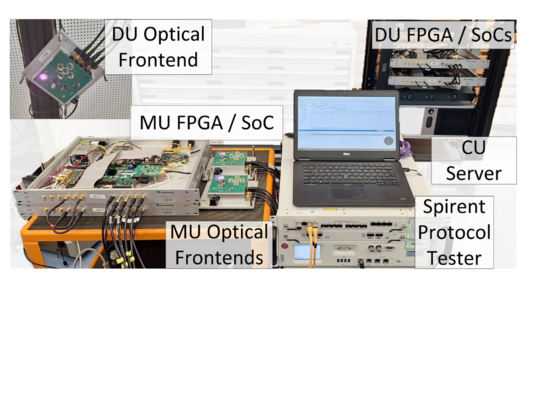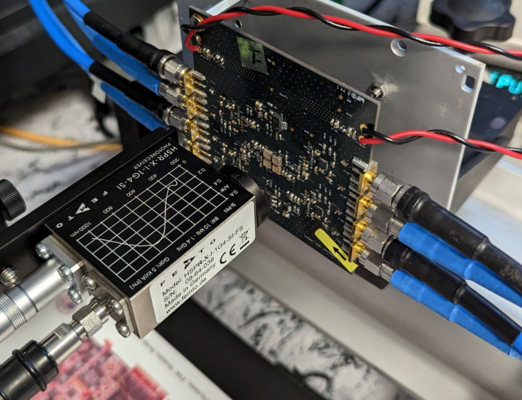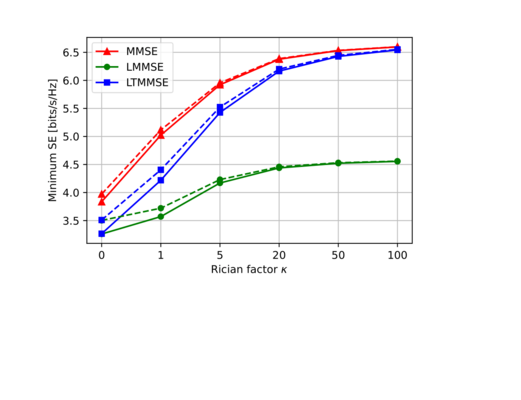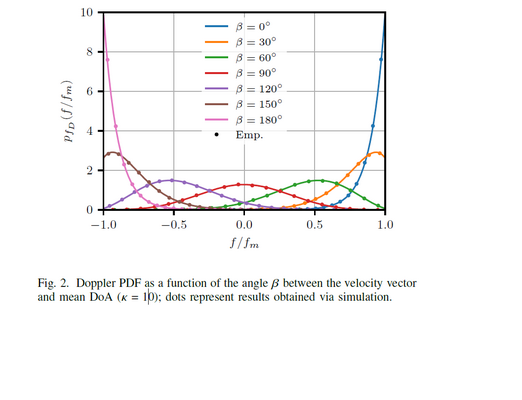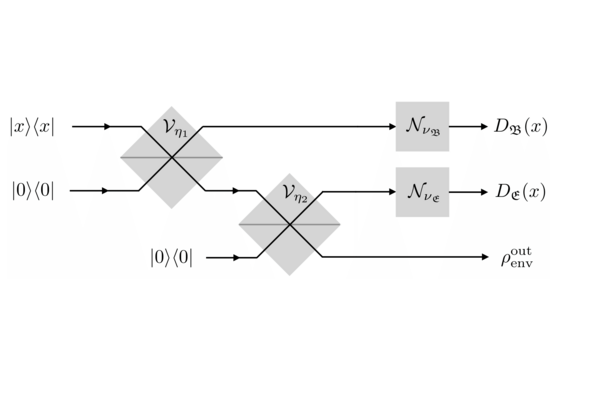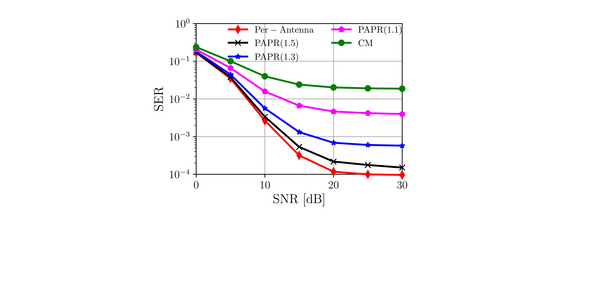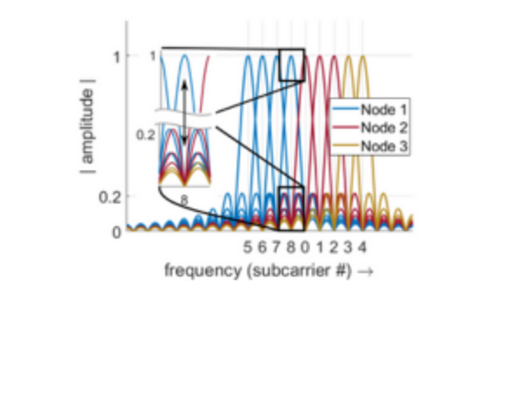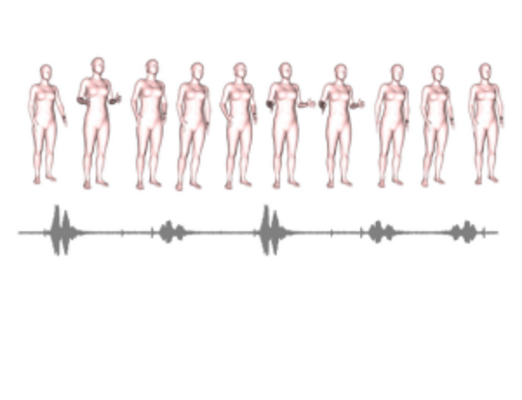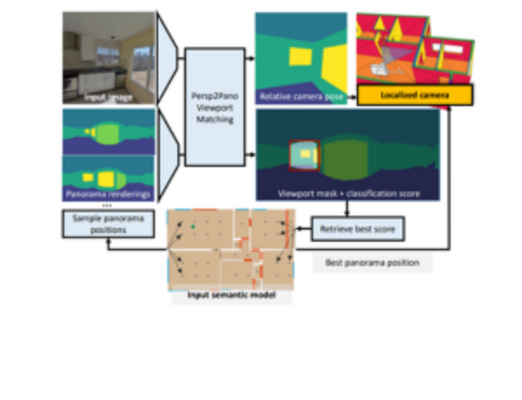Analysis of Interaction Mechanisms and Intercomparison of Raytracing Tools for Optimizing THz Simulations
This paper compares different raytracing tools in the sub-THz area, to analyze the weight of several different effects, e.g. reflections, diffractions, scattering or atmospheric attenuation, during raytracing simulations for high frequencies. For...
High-quality deepfakes have a heart!
Recent deepfakes preserve subtle heart rate signals, challenging the assumption that rPPG-based detection remains effective. Our study demonstrates that modern deepfake generation techniques encapsulate the heart rate dynamics of source videos,...
RIS-Assisted 6G Networks: Challenges and Tradeoffs in Control Standardization
Despite extensive theoretical progress in reconfigurable intelligent surfaces (RISs), practical models and network-level studies remain limited. This paper bridges the gap, exploring RIS-assisted links, proposing a control plane approach, and...
Diamond-on-chip magnetic field camera for mobile imaging
In this work, we introduce concepts for spatially resolved magnetic field sensing and two-dimensional gradiometry with an integrated magnetic field camera. The camera utilizes infrared absorption optically detected magnetic resonance (IRA ODMR)...
3D-Printed Dual-Polarized Magneto-Electric Dipole Antenna with Wideband High Isolation for Full-Duplex Applications
This paper presents a dual-polarized magneto-electric dipole antenna with orthogonal Gamma and inverted-Gamma probes, fabricated via 3D metal printing. It offers a 3-4 GHz impedance bandwidth, with excellent cross-polarization isolation (>50...
Link Tomography: A Tool for Monitoring Optical Network and Designing Digital Twins
Researchers from Deutsche Telekom AG and Fraunhofer HHI explores the Link Tomography, a receiver-based DSP approach for monitoring optical networks and detecting anomalies. Delving into concepts and building methodologies, it addresses challenges...
Data Governance Framework for Telemetry Sharing
We propose a novel solution using the Eclipse Dataspace Components (EDC) Connector to enable regulated and policy-driven telemetry data sharing in telco ecosystems. We present its architecture, several compatible use-cases, and results validating...
7.75 Gbit/s LiFi Transmitter Using High-Power VCSEL Arrays
We report on a wide-beam LiFi transmitter using multiple VCSEL arrays with digital drivers. We transmit a 3.75 GBd PAM-3 signal at a gross data rate of 5.625 Gbit/s. Single-driver OOK operation yields 7.75 GBd.
Experimental Demonstration of a Correlation-Avoidance CMA for Blind Space-Division Multiplexed MIMO Equalization
We demonstrate blind 6x6 adaptive equalization of 32 GBd DP-QPSK 3-mode transmission over a 54 km FMF based on the singularity-free convergence ability of the correlation-avoidance CMA (CA-CMA). The CA-CMA is used for robust pre-convergence in a...
Improving Geometric Consistency for 360-Degree Neural Radiance Fields in Indoor Scenarios
NeRFs struggle with low-textured areas, causing "floaters" that reduce realism, especially on featureless surfaces. We propose a method for computing dense depth priors for these areas, using a novel depth loss function and patch regularization...
Automatic Drywall Analysis for Progress Tracking and Quality Control in Construction
This paper presents an automated drywall analysis method for construction progress and quality assessment using on-site cameras. It integrates a deep learning-based segmentation model to detect and classify drywall elements, with a module to...
Adaptive and Temporally Consistent Gaussian Surfels for Multi- view Dynamic Reconstruction
We propose AT-GS, a novel method for reconstructing high-quality dynamic surfaces from multi-view videos through per-frame incremental optimization. To avoid local minima across frames, we introduce a unified and adaptive gradient-aware...
LiFi for Industry 4.0: Main Features, Implementation and Initial Testing of IEEE Std 802.15.13
The recently approved IEEE standard 802.15.13 defines a deterministic medium access scheme with dynamically allocated time slices and two ways of coding and modulation for industrial light communication. We present our work on prototyping the...
Multi-Gbit/s LiFi Experiments with a VCSEL TX and an Enhanced Pulsed Modulation PHY
Enhancing an OOK-based PHY for LiFi, we show that the large bandwidth, high power, and low energy consumption of low-cost VCSEL arrays combined with SFP drivers can be utilized to reach Multi-Gbit/s data rates and enable user mobility in large...
On the Optimal Performance of Distributed Cell-Free Massive MIMO with LoS Propagation
We investigate the capability of team MMSE technique in enhancing distributed beamforming for dense user-centric cell free massive MIMO networks. Considering the anticipated ultra-dense nature of cell-free massive MIMO networks and the...
Doppler Power Spectrum in Channels with von Mises-Fisher Distribution of Scatterers
This paper presents a closed-form expression for Doppler spectrum in mobile wireless channels with von Mises-Fisher (vMF) angular distribution of scatters. The obtained result is employed to analyze the impact of the vMF scattering parameters...
Semantic Security with Infinite-Dimensional Quantum Eavesdropping Channel
We investigate the semantic security of classical and quantum communication channels in the presence of infinite-dimensional side channels. A new method for security proofs is developed, which allows to derive finite block-length results in the...
Joint Waveform Design for Communication and Sensing with Adjustable PAPR
This paper proposes a dual-functional waveform design for integrated sensing and communication systems under adjustable peak-to-average-power-ratio constraints.
Towards Infrastructure-assisted WiFi Rate Adaptation for Converged Networks with Morpheus
The paper discusses a novel framework to integrate heterogeneous Radio Access Technologies (RATs) with the 5G O-RAN for coordination and joint optimization. As an example, it lays out the architecture of a WiFi Radio Intelligent Controller (RIC)...
Lossless Decoupling Networks for RF Self-Interference Cancellation in MIMO Full-Duplex Transceivers
The article presents a novel self-interference cancellation (SIC) technique using a lossless decoupling network in the RF domain for dedicated transmit-receive antennas. It includes antenna coupling analysis, SISO and 2×2 MIMO tests, and a...
Mobilizing the Terahertz Beam: D-Band Analog-Beamforming Front-End Prototyping and Long-Range 6G Trials
This article presents a novel D-band (150-175 GHz) wireless transceiver, achieving 48 dBm EIRP with eight RF beams via a Rotman lens, outperforming prior versions. Developed with InGaAs MMIC technology, it enabled 6G trials, including a 9-meter...
Correlation Properties in Channels With von Mises-Fisher Distribution of Scatterers
The von Mises-Fisher (vMF) scattering model is widely recognized for characterizing angular power distributions in MIMO systems and demonstrates versatility in modeling both communication and radar channels. This paper introduces exact and simple...
Towards Application Level Energy Monitoring for Green 6G Networks
We present a method to monitor network side energy consumption by an application running on the UE by fusing energy monitoring data with in band network telemetry.
Gaussian Splatting Decoder for 3D-aware Generative Adversarial Networks
We present a novel approach that combines the high rendering quality of NeRF-based 3D-aware GANs with the flexibility and computational advantages of 3DGS. By training a decoder that maps implicit NeRF representations to explicit 3D Gaussian...
Robust mmWave/sub-THz multi-connectivity using minimal coordination and coarse synchronization
How to provide robust connectivity against signal blockage in 6G mmWave/sub-THz networks? This study demonstrates that carefully designed multi-connectivity schemes can realize full macrodiversity gains and significant SNR gains through canonical...
Real-time Experiments towards an Automotive OFDMA Communication Bus
We present a new automotive bus system which allows enhanced channel adaptation and fine-granular multi-user access based on OFDMA. We highlight advantages of OFDMA in automotive applications, sketch the concept and present an FPGA prototype.
Multi-Resolution Generative Modeling of Human Motion from Limited Data
We present a generative model that learns to synthesize human motion from limited training sequences. Our framework provides conditional generation and blending across multiple temporal resolutions. moOurdel adeptly captures human motion patterns...
Quanda: An Interpretability Toolkit for Training Data Attribution Evaluation and Beyond
In recent years, training data attribution (TDA) methods have emerged as a promising direction for the interpretability of neural networks. While research around TDA is thriving, limited effort has been dedicated to the evaluation of...
Experimental Characterization of a WR3-Coupled Photodiode Transmitter for High-Speed Terahertz Wireless Communication
We analyze the system performance of a large bandwidth photonic THz transmitter based on a WR3 coupled photodiode. Employing probabilistic constellation shaping (PCS) alongside a 64-QAM base constellation, we achieve net data rates of up to 76.8...
SPVLoc: Semantic Panoramic Viewport Matching for 6D Camera Localization in Unseen Environments
We present SPVLoc, a global indoor localization method that accurately determines the six-dimensional (6D) camera pose of a query image and requires minimal scene-specific prior knowledge and no scene-specific training. Our approach employs a...











